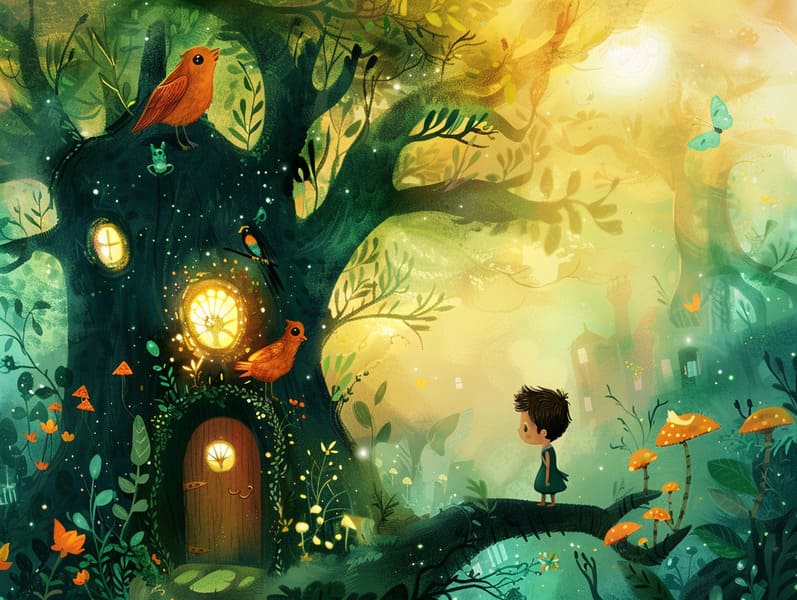Tracing the Heritage of Fairy Tales with the Unfading Spell.
Tracing the Heritage of Fairy Tales with the Unfading Spell.
Blog Article

Popular fairy tales have long histories. These tales have been spoken from one generation to the next well before they were ever inscribed. They originated from a variety of societies, including Eastern traditions. They were initially shared among grown-ups, often carrying themes and messages reflective of the societal norms and beliefs of the time.
The renowned Brothers Grimm, Jacob and Wilhelm Grimm, were among the first to assemble many of these beloved tales. Their anthology, "Grimm's Fairy Tales," included narratives like "The Story of Cinderella," "Hansel and Grethel," and "Little Snow White," which have since become classics in the world of classic fairy tales. Similarly, H. C. Andersen's delightful fairy tales, such as "The Sea Maid," and "The Duckling's Story," have won hearts worldwide, establishing their place in the pantheon of famous fairy tales.
Despite their ancient origins, fairy tales remain as relevant as ever, especially as nighttime stories for kids. These magical stories are now available in different formats, including beautifully illustrated books, charming animations, and internet fairy tales.
Their persistent charm can be linked to several charming aspects:
Important Morals: Timeless fairy tales often share important moral lessons. Tales like "The Tale of the Boy Who Cried Wolf" teach the significance of truthfulness, while "The Tale of the Tortoise and the Hare" highlight the values of resolve and humbleness. These stories offer little ones clear distinctions between moral and immoral, helping to shape their moral compass in a gentle yet significant way.
Kindness and Comprehension: Fairy tales frequently feature figures facing struggles and tests, inspiring audiences to understand with their struggles and cheer for their triumphs. For instance, "Beauty and Her Beast" illustrates the merit of looking deeper to understand the inner spirit of a character, enhancing insight and knowledge.
Cultural Perception: Many fairy tales are interwoven with the cultural contexts from which they blossomed. Discovering these narratives can provide delightful insights into different ways of life, building a sense of global insight and respect.
Creativity and Imagination: The fantastical elements in timeless fairy tales—supernatural elements—provoke children’s visions. These fairy tales carry readers to enchanted realms, kindling creative thinking and a sense of astonishment that persists a lifetime.
Ancient fairy tales are not only fascinating but also instructive. They provide mesmerizing tools in fostering various thinking and feeling skills in the young. When ancient fairy tales are voiced, they cultivate speech development by teaching new language and sophisticated sentence structures. This practice also promotes listening skills and focus, as children concentrate deeply, looking forward to see what happens next.
Furthermore, more info analyzing the themes and characters of old fairy tales can strengthen thought processes and intellectual skills. The young are educated to recognize patterns, guess what will happen, and figure out cause and effect. These debates also facilitate little ones voice their thoughts and feelings, advancing their emotional intelligence.
In today’s technological era, the existence of online fairy tales has made these tales more accessible than ever. Internet sites and applications share large libraries of bedtime fairy tales that can be explored or played anytime, anywhere. Fairy tales told out loud are particularly widespread, featuring an entertaining method for the young to delight in these entrancing tales. Read-aloud stories and voiced videos lead characters and settings to life, often supported by entrancing harmonies and harmonies that enrich the narrative experience.
The lasting allure of traditional fairy tales lies in their ability to evolve to modern society while preserving their underlying messages. Contemporary updates of these fairy tales often feature more varied characters and modern settings, making them familiar to today’s audience. However, the central morals of courage, compassion, and fair-mindedness remain unchanged, continuing to influence children of all ages.
Old fairy tales also offer a sense of peace and recognition. They feature a well-arranged narrative with a apparent beginning, middle, and end, often finishing with the resolution of conflicts and the triumph of virtue over vice. This certainty can be easing for little ones, spreading a sense of consistency in an dynamic world.
Ancient fairy tales continue to enchant and edify new generations, maintaining their loveliness and significance in modern society. As nighttime stories for kids, they confer a perfect blend of fantasy and learning, fostering moral values, empathy, and creativity. The prevalence of free fairy tales online and the favor of fairy tales told out loud assure that these classic fairy tales remain accessible to new generations.
By continuing and circulating these stories, we continue to exalt the rich tapestry of cultural legacy and cultural heritage. Whether you are discovering a colorful picture book, enjoying a virtual library, or playing an read-aloud story, the loveliness of ancient fairy tales is always within reach. These fairy tales emphasize of the ageless influence of narratives and its ability to bind us across centuries and lands.
Regardless if you are seeing a vividly illustrated book, delving into a digital collection, or listening on an voice book, the allure of Grimm's fairy tales is always within reach.
These stories illustrate of the endless influence of stories and its ability to connect us across eras and regions, creating a bond that fascinates and enlightens alike.